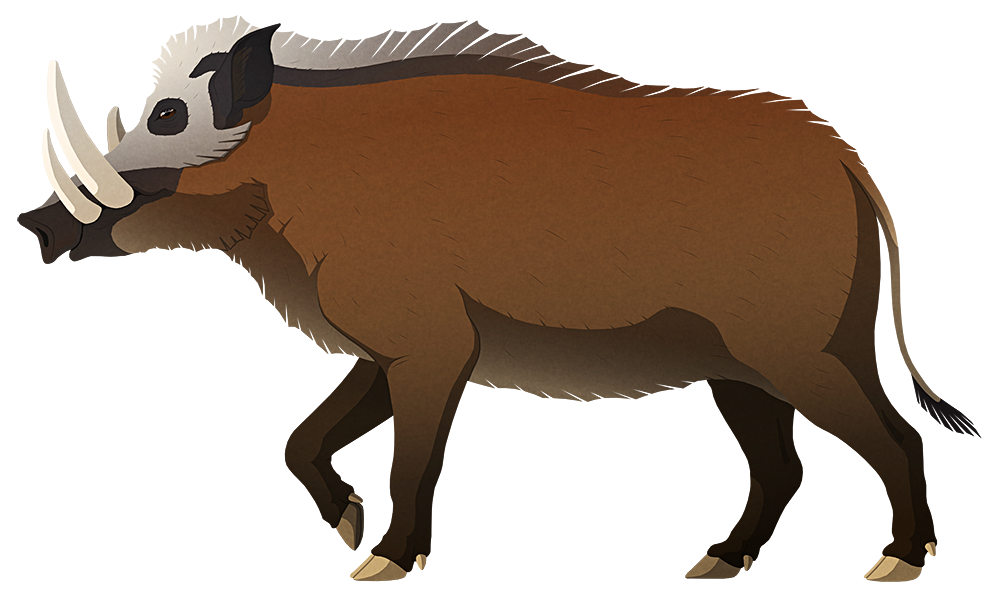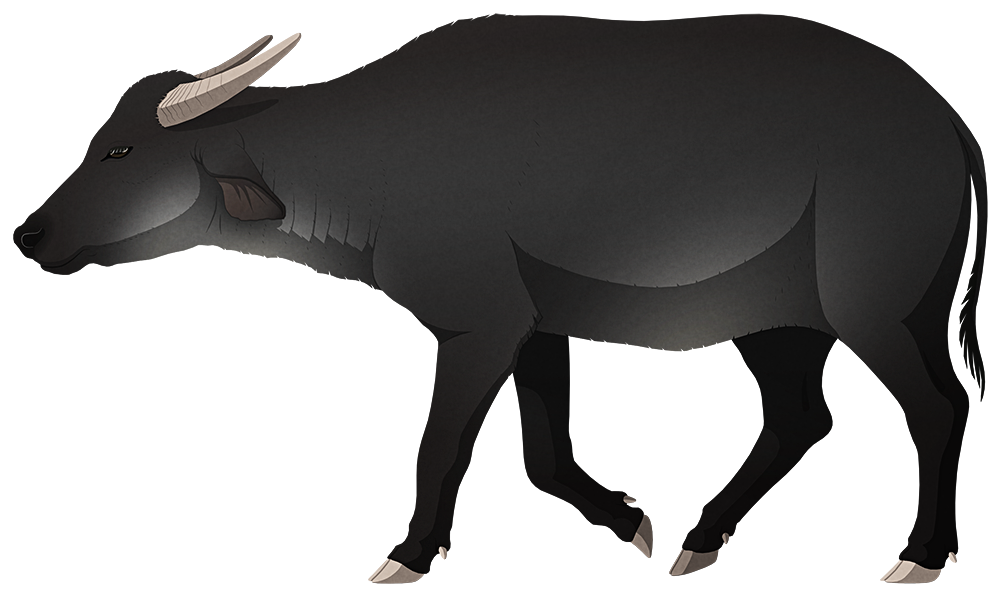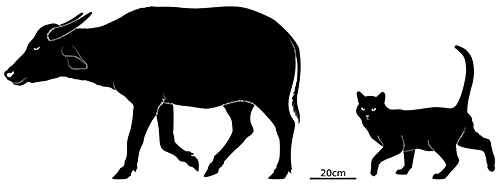Located on the Pacific Ring of Fire, the islands of the Philippines were formed by volcanic activity at the junction between several tectonic plates. Most of the 7461 islands that make up the archipelago have never been connected to any other landmass, leading to a huge number of unique endemic species evolving from whatever managed to arrive via ocean rafting events.

Celebochoerus cagayanensis was a giant species of pig, known from the island of Luzon. Living around 800,000 years ago in the mid-Pleistocene, it had enormous tusks and stood around 1m tall at the shoulder (3’3″) — similar in size to the very largest modern pigs, the African giant forest hogs.
The giant forest hogs are also some of its closest living relatives, along with the river pigs, and back in the Miocene and Pliocene similar pigs were present in Asia. Celebochoerus‘ ancestors probably arrived in the Philippines from Taiwan, and eventually spread onwards to the Indonesian island of Sulawesi to the south, where another species of Celebochoerus existed.


In contrast to the huge pigs of Luzon, the Cebu tamaraw (Bubalus cebuensis) was a particularly tiny species of wild cattle related to modern water buffalo. Just 75cm at the shoulder (2’6″), it was an example of insular dwarfism even smaller than the modern tamaraw which still survives on the island of Mindoro.

The spotty fossil record of these animals makes it difficult to determine when they disappeared, but it’s likely that they went extinct sometime around the arrival of early humans about 700,000 years ago.

